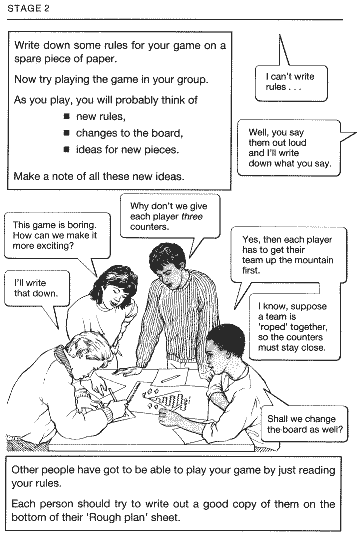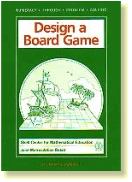Design a Board Game (1987)

In Design a Board Game, groups carefully design and produce their own board games. These games are then played and evaluated by other class members. This involves developing ideas from 2-dimensional shape-and-space, together with basic concepts of probability.
- Students play a number of games which have been devised by someone else, discover faults and shortcomings and suggest improvements.
- Students share their ideas within groups, then decide on a rough plan for their own game.
- Each group of students produces a detailed design, makes it, and checks the finished version.
- The groups exchange games and test them. When they are returned, each group re-assesses its own game in the light of another group's comments.
The materials comprise a teacher’s guide, a student booklet, a set of photocopy masters and a set of game boards and cards for the example games.
Unless stated otherwise, these materials are Copyright © Shell Centre for Mathematical Education (see the materials for full details). You may download these materials for personal use and freely repoduce them for non-commercial purposes including teaching, research and staff development within your institution. For other uses, please contact the Bell Burkhardt Daro Shell Centre Trust at publications@mathshell.com for information.
Numeracy Through Problem Solving series
Numeracy Through Problem Solving is a sequence of five modules which develop students' ability to use mathematics together with other skills, in tackling problems of concern or situations of interest in everyday life - the original definition of numeracy in the Cockcroft Report.
Each module is designed to take between 10 and 20 hours to complete. Each provides a theme within which the students take responsibility for planning, organising or designing. They are based around the everyday interests of most students. Students work both individually and in groups and are able to choose which areas of mathematics to deploy. They also implement the results of their own decisions - a vital educational experience!
Although the specific references to GCSE are obsolete, these modules remain a unique resource for developing numeracy skills in engaging contexts across a wide range of ages and abilities.
